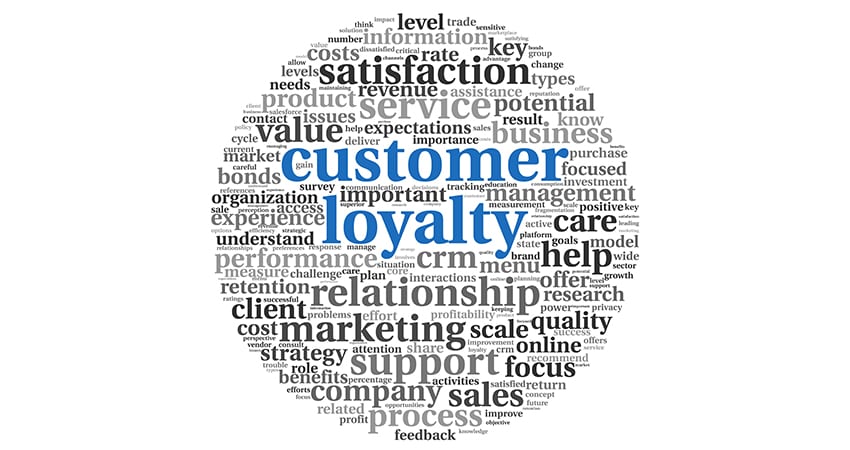The increasing competition in retail is forcing brands to re-evaluate how they deliver value and stay relevant to consumers. Retailers want to understand what drives their customers to visit their stores and make purchases, and how to reinforce those loyal behaviors.
Loyalty programs can help achieve those goals – increased foot traffic, more repeat visitors, deeper engagement and a successful financial return on the overall loyalty investment. All things considered, doing loyalty successfully is no easy feat – but it can be done.
We know just how hard customer loyalty is to nurture because we’ve done it ourselves. Stepping into the shoes of our customers, we built a national loyalty program from the ground up. In the five years that the Fuel Rewards® program has been in market, we’ve reached the 10-million-member mark and another critical milestone – we’ve saved our members over $1 billion off the cost of gas.
We built the Fuel Rewards program around our core mission to deliver everyday value to consumers, and we developed a currency that would do just that. The demand for an everyday commodity, gas, makes Fuel Rewards savings a unique, near universal and valuable loyalty currency for consumers across all spending categories. Regardless of gas price fluctuations, consumers prefer Fuel Rewards savings over cash back and other rewards.
Through the Fuel Rewards program, we’ve helped make loyalty easier for our participating retail brands and their customers. Fuel Rewards savings are easy to earn, easy to redeem and easy to love. That’s really what a successful loyalty program should be: uncomplicated for the consumer and (financially) rewarding for all.
Increased foot traffic
Retail is a fast-growing but very competitive market, with new competition from online retailers, dollar stores, coffee chains and quick service restaurants. With so much competition, retailers can’t depend on store location or brand recognition alone to increase foot traffic. In fact, 63% of consumers will drive 5 minutes out of their way just to save 5¢/gallon on gas. Your customers need incentives and rewards to shop at your store instead of down the street or online.
The first step to increasing foot traffic is to improve your offers and promotions. Customers can buy a coffee, energy drink or new shirt in many stores – do your offers and promotions differentiate your store from all the others? This isn’t a matter of guesswork – your loyalty program should tie together all customer data and provide direct line-of-sight into your customers’ behavior. If you know that a customer frequently buys an energy drink, then drill down deeper into the data for more insights, such as when or what else they buy. Those are the kind of insights that will get customers into your store – if you use the data to get the right offer to the right customer at the right time. Loyalty is a data-driven engine that will improve your offers and drive more foot traffic to your store.
More Repeat Visitors
Once you have more traffic coming into the store, you want to keep customers coming back. This is where the work of loyalty really begins. Offers and promotions are a great start, but you must also maintain loyalty memberships and consistently create value for your customers.
Many retail loyalty programs are setup in such a way that customers must take numerous steps before they reach a tier or earn rewards. The results in the last few years haven’t been great – although U.S. loyalty programs have grown to 3.8 billion memberships, they have slowed to 15% growth (compared to 26% growth just two years ago). The top reason for program abandonment is that it takes too long to earn points or miles.
If you want to drive more repeat customers, make it easy for them to participate and benefit from the program, and then they will engage more frequently. You must consistently communicate the value of being an active program member and reinforce the program at every touchpoint, from in-store signage to the point of sale and on social media. Loyalty has to be earned, consistently.
Deeper Engagement
With more customers participating in your program and visiting more frequently, your goal should be to create deeper engagement. The first KPI to watch is basket size – are customers spending more in your store? In the short term, your offers and promotions might get them to buy two items instead of one, but as you build store loyalty and not just item loyalty, you can capture more share of wallet as customers shop less elsewhere.
Your program’s mobile app is critical for deeper engagement. Does your app make it easy for customers to view their offers, keep track of their rewards and monitor their progress for tiered rewards? Loyalty is an investment in your brand; customers want to see how much they’ve invested and what they’re getting in return.
It’s also important to engage customers across multiple channels, including email, SMS message and social media. Not only does it show customers you are proactively seeking their loyalty, but it generates more valuable data about how your customers want to be engaged – for instance, do they prefer one channel over another, or are they more engaged at a certain time of day?
ROI and the Loyalty Investment
Ultimately, the success of your loyalty program will be judged on how well it drives higher revenues and business growth. Loyalty is an investment in your customers and your stores – everything from POS integration and mobile app development to vendor management, in-store execution and social media. You want a successful loyalty program that provides a return on your investment, not one that becomes a cost center.
There is no single key to a successful loyalty program – it takes a combined effort of new technology, data-driven strategy and ongoing adjustment and improvement. Successful loyalty programs should be supported by robust reporting capabilities that link transaction data, customer data, CRM data and campaign-specific data to provide a bird’s eye view of your program. Loyalty program managers can then zero in on successes, identify underperforming areas, do more of what’s working and adjust campaigns and offers so they deliver better results.
Loyalty is a win-win investment for both sides. You invest in rewarding your customers, and they invest in earning your rewards. It’s an ongoing relationship that creates value beyond a POS transaction. Loyalty is truly a strategy for long-term business growth.
Learning from mistakes is also part of the process. Over the years at Excentus, we’ve made a few missteps along our path to loyalty success. But we tested and learned, and tested some more to truly understand what drives customer loyalty and how to build a successful program that drives business results. Today, we help retailers of all sizes and across multiple industries put together the many moving parts that combine to create a successful loyalty program.
Are you ready to crack the loyalty code, and make loyalty work for you?
Jeff Hassman is Chief Marketing Officer at Excentus

